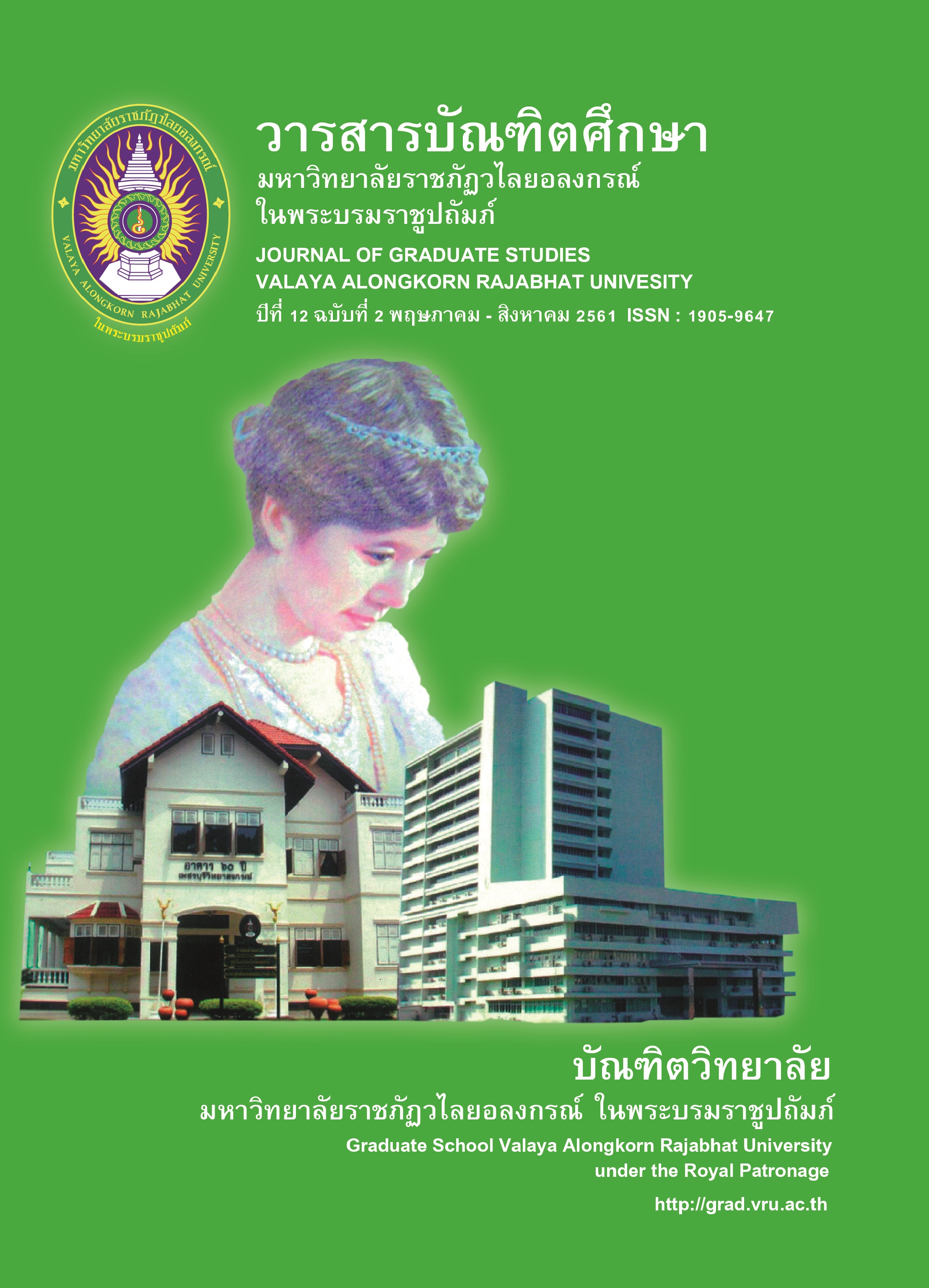THE ORGANISING LEARNING ACTIVITIES BY USING SOCIAL NETWORK TEACHING OF STATISTIC FOR LIFE AND CAREER ON LEARNING ACHIEVEMENT AND INFORMATION LITERACY SKILLS OF UNDERGRADUATE STUDENTS IN THE 21st CENTURY
Main Article Content
Abstract
The purposes of this research were: 1) to compare the learning achievement before and after learning activities through online social network, Statistic for Life and Career of undergraduate students in the 21st century, 2) to compare information literacy skills before and after learning activities through online social networks of undergraduate students in the 21st century, 3) to assess their satisfaction with the learning activities through an online social network in the course of Statistic for Life and Career on the information literacy skills of undergraduate students in the 21st century. The research sample was a bachelor degree in Animation and Multimedia, Faculty of Science and Technology, Bansomdejchaopraya Rajabhat University, 2nd semester of 2016 by purposive sampling. The sample size was 24. The instrument used in the research are: (1) course outline of Statistic for Life and Career, (2) multiple-choice achievement test, (3) information literacy skills test in 21st century of UCLA, (4) satisfaction assessment form 5 rating scale. The data were analyzed by mean, standard deviation and paired Samples t-test.
The research findings were as follows: 1) scores from pre and post-course learning achievement through online social network, Statistic for Life and Career on information literacy skills of undergraduate students in the 21st century. The post-test scores were significantly higher than those before the study at the 0.05 level, 2) the results of the comparison between the pre-and post-social knowledge skills of the undergraduate students in the 21st century after learning were significantly higher than before the study at the 0.05 level, 3) the satisfaction rating on learning activities through social networks, Statistic for Life and Career on the information literacy skills of undergraduate students in the 21st century at a high level.
Article Details
บทความทุกเรื่องได้รับการตรวจความถูกต้องทางวิชาการโดยผู้ทรงคุณวุฒิ ทรรศนะและข้อคิดเห็นในบทความวารสารบัณฑิตศึกษา มหาวิทยาลัยราชภัฏวไลยอลงกรณ์ ในพระบรมราชูปถัมภ์ มิใช่เป็นทรรศนะและความคิดของผู้จัดทำจึงมิใช่ความรับผิดชอบของบัณฑิตวิทยาลัย มหาวิทยาลัยราชภัฏวไลยอลงกรณ์ ในพระบรมราชูปถัมภ์ กองบรรณาธิการไม่สงวนสิทธิ์การคัดลอก แต่ให้อ้างอิงแหล่งที่มา
References
ทิศนา แขมมณี. (2552). ศาสตร์การสอน:องค์ความรู้เพื่อการจัดกระบวนการเรียนรู้ที่มีประสิทธิภาพ. กรุงเทพฯ : สำนักพิมพ์แห่งจุฬาลงกรณ์มหาวิทยาลัย.
วิจารณ์ พานิช. (2555). วิถีสร้างการเรียนรู้เพื่อศิษย์ในศตวรรษที่ 21. กรุงเทพฯ : มูลนิธิสดศรี-สฤษดิ์วงศ์.
ศันสนีย์ เลี้ยงพานิชย์. (2557). การศึกษาผลสัมฤทธิ์และความพึงพอใจจากการใช้เว็บเครือข่ายสังคมเป็นเครื่องเมือในการจัดการเรียนการสอนของนักศึกษาชั้นปีที่ 3 สาขาวิทยาการคอมพิวเตอร์. วารสารวิจัย มข. 17(1), 142-152.
อรุณรัตน์ ศรีชูศิลป์ และอนิรุทธ์ สติมั่น. (2555). พฤติกรรมการใช้เครือข่ายสังคมออนไลน์ของนักศึกษาปริญญาบัณฑิต คณะครุศาสตร์ ศึกษาศาสตร์ในมหาวิทยาลัยของรัฐ. รายงานสืบเนื่องจากการประชุมวิชาการระดับชาติด้านอีเลิร์นนิ่ง บูรณาการการเรียนรู้ออนไลน์ประชาคมอาเชี่ยน: นโยบายและกระบวนการ. กรุงเทพฯ : อาคาร 9 อิมแพค เมืองทองธานี หน้า 204-211.
Brown, Cecelia M. & Krumholz, Lee R. (2002), Marck .Integrating Information Literacy into the Science Curriculum, College & Research Libraries. 63(2), 111-123.
Hepworth, Mark. (1999). A Study of undergraduate information literacy and skills :The inclusion of information literacy and skills in undergraduate curriculum. Retrieved from https:// www.ifla.org/IV/ifla65/papers/107-124e.html.
Siemens, G. (2004). Connectivism: A learning theory for the digital age. Retrieved from https://www.learingnetwork.ac.nz/shared/professionl Reading/TRCONN2011.pdf.
Suzanne, D. (2009). Connectivism Learning Theory: Instructional Tools for College Courses. A Thesis for a Master Degree in Education ED 591, Independent Thesis Research Western Connecticul State University.


